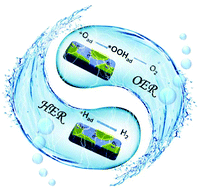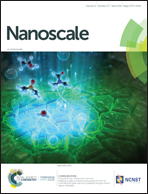Quasi-layer Co2P-polarized Cu3P nanocomposites with enhanced intrinsic interfacial charge transfer for efficient overall water splitting†
Abstract
The search for efficient, stable and low-cost electrocatalysts for water splitting is a big challenge faced by energy conversion systems. In this work, Cu3P–Co2P nanocomposites with numerous interfaces are employed as catalysts for water splitting in alkaline solution. The quasi-layer structure of Co2P and the polarized plane of Cu3P endow the nanocomposites with large surface areas and active sites, which substantially favors the intrinsic charge transfer and boosts the catalytic activity. In addition, Cu3P reduces the lattice mismatch between Co2P and nickel foam and then enhances the catalytic stability. For the optimized Cu3P·0.75Co2P catalyst, a low overpotential of 124.6 mV@−20 mA cm−2 is required with a Tafel slope of 65 mV dec−1 for the hydrogen evolution reaction (HER) and an overpotential of 334 mV (at 20 mA cm−2) is required for the oxygen evolution reaction (OER). The potential for the overall-water-splitting@10 mA cm−2 is about 1.55 V with the optimized Cu3P·0.75Co2P catalysts. Theoretical and experimental results both reveal the significance of coupling of Cu3P in the two processes of water-splitting for the Cu3P–Co2P nanocomposite catalyst.



 Please wait while we load your content...
Please wait while we load your content...